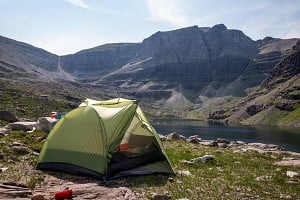
These days, solo backpacking tents can be had for well under 1kg - but they tend to make compromises in terms of living space, weather performance, or just sheer cost. When it comes to backpacking, travel or minimalist mountain use, how light is right? Though they cut out unnecessary grams where possible, Lightwave's tents aren't built simply to chase headline weight figures at the expense of functionality and sturdiness. The new Sigma range, the S10 for one person and the S20 for two, is an example of this. For only around 1300g all-in, still a perfectly bearable weight, the S10 proves to be a very solid and spacious one-person shelter. Key to its design is an adaptation of the single skin principle used in ultralight mountain bivvy tents.
I've had the S10 Sigma on test since early spring, and have camped in it in a variety of conditions from sub-zero and clear, through murky and windy, to summer rain and humidity. To date its performance has been hard to fault.
Design
Fundamentally, the S10 Sigma is a simple, one-door dome tent, its structure based around a pair of crossed poles running through sleeves in the fabric. So far, so single skin mountain tent. But there's more: An extra little cross-piece which adds volume, resulting in a very steep-sided tent that sheds snow and rain well and provides plenty of headroom. The main body of the tent is a single skin, with a bathtub-style groundsheet. Separated from the inner by a zipped internal door, the large porch adds useful storage and cooking space.
Weight and build quality
Yes, you can get a tent these days for around half its weight, but at only 1240g for tent, poles, guylines and stuffsack, plus a further 97g for the pegs that come supplied, the S10 Sigma counts as lightweight in my book, if not perhaps ultralight. Considering its size and sturdiness when pitched, I think the weight is entirely reasonable, and I've been happy to carry it on several mountain overnight trips on which I could feasibly have made do with a lighter tent, because the peace of mind was worth the extra couple of hundred grams. With light-but-strong DAC Featherlite aluminium poles, and a high level of workmanship throughout, build quality is top notch; the S10 is clearly made to last.
Pitching
Putting up the S10 is in principle quick and easy for one person, since it is basically erected as soon as you've slid the two main poles into their sleeves and popped their ends into the corner eyelets. However on our sample the fit is so tight that I've often found it a real struggle to manhandle the final pole end into its eyelet; we're talking red-in-the-face-and-swearing tight, the sort of force you worry risks rupturing the tent or yourself. I have always got there eventually, but with cold hands, darkness approaching and no other shelter for miles around it can be no laughing matter. I've contemplated sawing a couple of millimetres off one of the pole cross-sections. Lightwave could have made pitching a cinch if they'd added a second eyelet to give you the option of a more relaxed fit.
Essentially the main body of the tent is free-standing, and doesn't absolutely require pegging in order to stay upright; however the porch does need a peg. In practise, to prevent it all blowing away you do peg all four corners of the body, plus the porch, so it's probably fair to say the S10 takes a minimum of five pegs. Lightwave provide 12 light aluminium pegs, eight of which are fairly sturdy and four of which are a flimsier half-width to save weight. Even the thicker pegs have their limits, and I've managed to knock the head off one when hammering it with a rock into hard ground. Multiple guying points give you loads of options to provide extra support in windy weather, making for a bombproof-feeling pitch. This is something I've really appreciated on blustery Scottish summit camps in early spring. You have to attach the guylines yourself - best done before leaving home - and half a dozen come supplied. These are heavy-gauge nylon cords, nothing fancy, and it's fair to suggest that Lightwave could have cut out a little weight, without sacrificing much strength, by supplying thinner guys.
Fabrics
The X-Tex fabric used on the fly is a 20d nylon ripstop that seems pretty robust for its weight. With a hydrostatic head of 20,000mm it is easily waterproof enough for rainy old Britain. Condensation is an issue in all small tents, even double walled designs, so you might reasonably expect the single skin on offer here to be dripping with it. The traditional fix, used by tent designers to varying degrees of success, is ventilation; but instead of creating lots of airflow (not necessarily desirable in cold windy weather), here Lightwave are letting the fabric itself do the work. Their waterproof, breathable X-Tex fabric is coated with a PU layer that's been impregnated with activated carbon. Apparently the carbon is the crucial bit:
"Activated carbon has two key properties that alters what happens to the water molecules at the point of condensation" they explain.
"First, it offers a greatly increased surface area at the microscopic level to enhance the adsorption rate of the water molecules. Secondly, activated carbon is very 'attractive' to water molecules. These two factors mean that it literally sucks up all the moisture, almost as instantaneously as it condenses. This means that virtually all the water molecules are absorbed into the coating and are available for transportation to the outside, whilst at the same time, formation of water droplets is prevented."
In the context of a single skin tent, a different set of circumstances than you might find in waterproof clothing, perhaps, Lightwave claim that X-Tex manages condensation more effectively than other coated fabrics, or microporous alternatives such as Gore-Tex. Its only limitation, and it's common to all fabrics, is when the temperature is so low that water molecules not only condense, but also freeze on the inside skin of the tent.
All this sounds great in theory, and in practise I've found it works extremely well too. In the S10 Sigma I've never suffered from wet walls or drips. Even when it's raining and fairly humid outside, the inside wall of the tent feels strangely dry to the touch. And exactly as Lightwave say, the only time I have noticed water on the inside is when it was cold enough to be frost. Once the sun rose and the tent warmed up, this soon disappeared.
One observation about X-Tex, and it's by no means a bad thing, is that being black on the outside and coated on the inside, it really doesn't let through much light. I found this out the hard way by sleeping in - not much of a sacrifice, though it did make for a fairly busy day and a late finish.
The remainder of the tent is made of more conventional fabric - a 50d PU-coated nylon groundsheet, and a 30d PU-coated nylon porch. With a ripstop pattern, both feel tough for their modest weight. On paper their 5000mm water column does not seem a lot - particularly in the case of the groundsheet, which you can expect to come into contact with waterlogged ground and be subject to the pressure of kneeling etc. However so far so good, in my experience.
Weather performance
Wind, rain or shine, this is the most weather-resilient solo tent I've ever used, hands down.
When pegged out the S10 forms a very tight structure, with minimal flapping in the wind. A little dome like this would always feel sturdy, and the addition of at least 10 strong guy points boosts its wild weather credentials even further. The steep walls on all sides are perfect for shedding snow and rain, too. In my view this isn't just a lightweight model for 3-season backpacking, but can sensibly be used in the winter mountains too, at least in reasonable weather (and in a winter storm, who'd want to camp anyway?). From the point of view of wind, the one weakness is the large, fairly flat wall opposite the door, which can act as a bit of a sail if you've not managed to orient the tent correctly. Draughts are minimal with this single-skin design since the only vent is a little bit of mesh on the inner door. On a cold, windy night that's a big bonus compared to the double-skinned tents that in my experience tend to build in quite a lot of ventilation in order to combat condensation. I guess the only drawback in this regard is that there wouldn't be much air flowing through the S10 on a very hot day. Since I mostly camp up Scottish mountains, it's not a problem I'll be losing much sleep over.
Living space
Some solo backpacking tents can feel tightly cramped, with limited floor area or insufficient height. But space is the name of the game with the S10 Sigma. That little cross-piece and the steep walls combine to create a lot of headroom, plenty for me to sit upright inside (I'm 183cm tall), and not just in one little spot. The floor area is more than wide enough for a single camping mat, with elbow room to spare, so once you're zipped in for the night you don't feel claustrophobic or entombed. If you had to sit out wet weather, this would be a good tent to do it in.
The addition of a porch creates extra room for boots, pack and even wet weather cooking, really helping to make the S10 feel like a livable and comfy place to spend a night, and not just a spartan shelter. Though the doorway itself is fairly tight, this is one of the largest porches of any one-person tent I've used; it's all relative of course, and I've still preferred to cook out in the open when the weather allows.
Summary
It's not the last word in ultralight shelters, but for its weight you would struggle to find a sturdier or more spacious solo tent, and as such the S10 Sigma's c.1300g is more than reasonable. Stable and confidence inspiring in bad weather, and built to last, this superb wee tent is well up to any three season use, and I'd say also has a place in the winter mountains. Its £500 price tag seems a lot to ask of anyone, but is on a par with comparable high-end solo tents from other brands - and in this case you're getting a lot of tent for your money. Unless saving every possible gram is your prime consideration, the S10 Sigma should certainly be on your shortlist. If Lightwave addressed the excruciatingly tight pole fit there'd be absolutely nothing to criticise; and where's the fun in that?
Lightwave say:
Since it was established in 2002, Lightwave dedicated itself to manufacturing light, all-out robust outdoor equipment. As it's common in the British industry, tents, backpacks and sleeping bags are all made based on the motto: "by mountaineers, for mountaineers." The 1-person tent S10 Sigma is no exception!
What's special about the Sigma series is the hybrid exterior design. Lightwave approached the age-old problem of moisture condensation on the inside of the tent with a new idea: instead of preventing the formation of moisture before it arises, an absorbing layer of so-called X-tex carbon coating was used. Thus, the S10 is particularly suitable for use in humid conditions without the condensed breathing air dripping into your face in the morning. Quite the opposite - the surface of the inside of the tent does not seem greasy but pleasantly dry due to the large surface.
The other features and abilities stand out as well: a light DAC Featherlite pole system ensures an easy setup and the floor with a 5000mm water column is slightly raised (the so-called bath tub design). A long sleeping area as well as a large apsis make for additional comfort. All these features make the S10 Sigma a versatile tent for all times of the year. The design provides excellent protection from wind and weather, whether you're in the mountains with a lot of snow or on a trekking adventure tour in tropical regions.



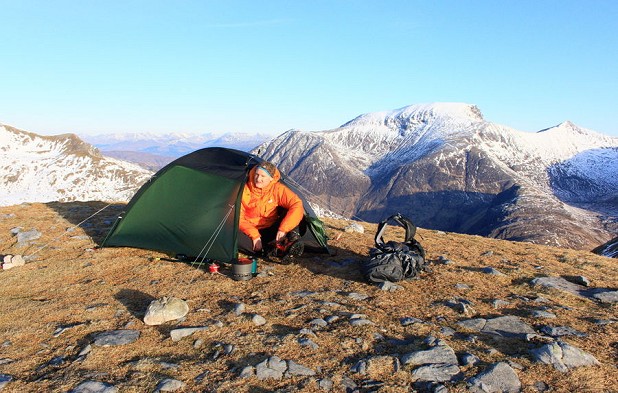
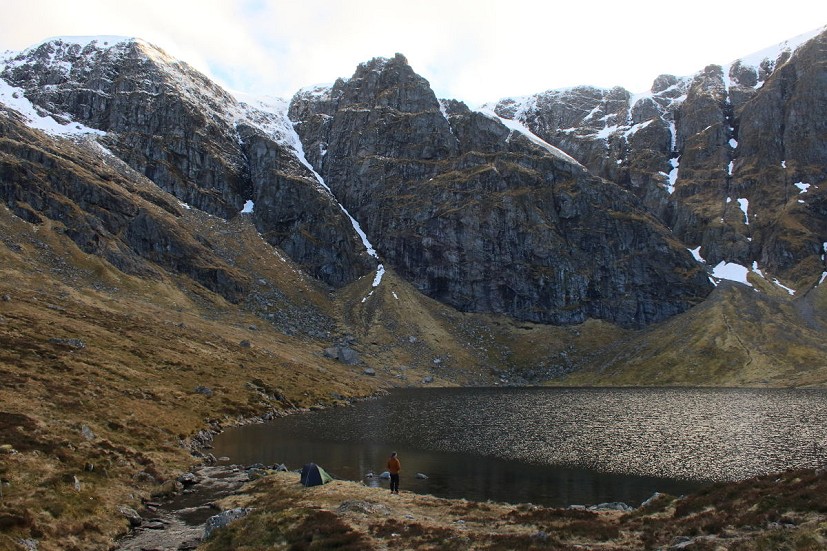
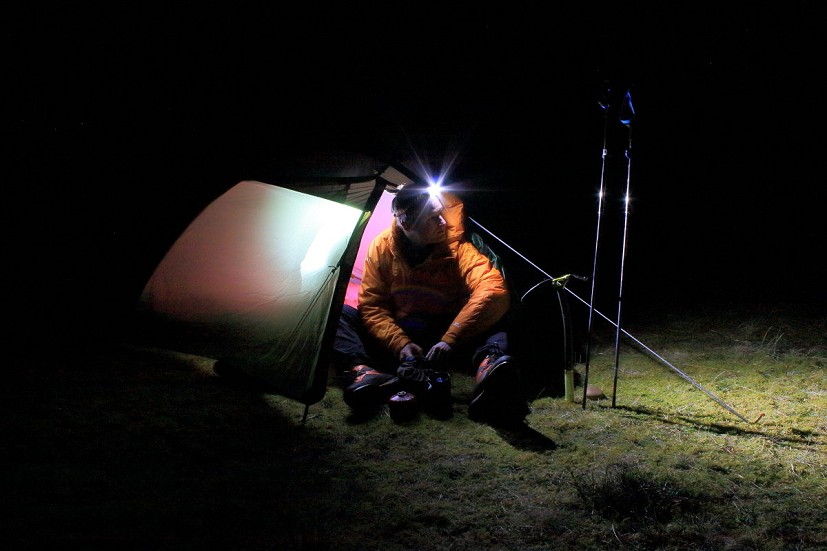
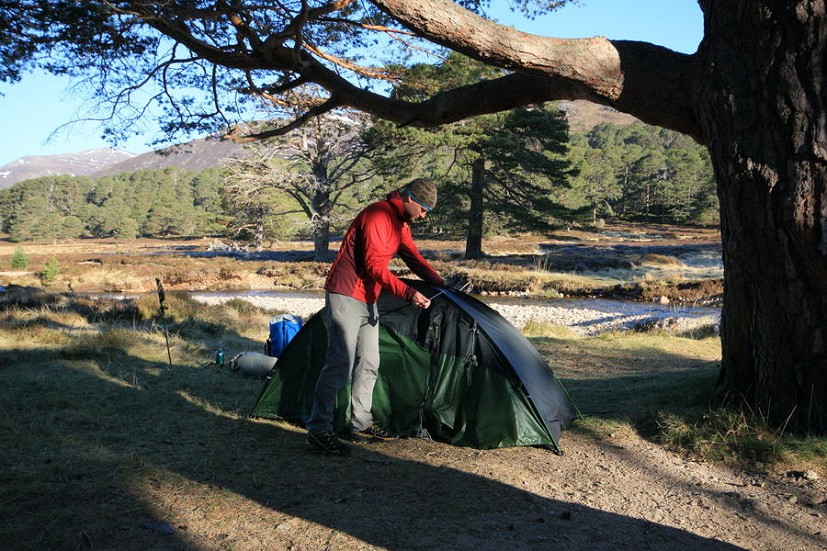
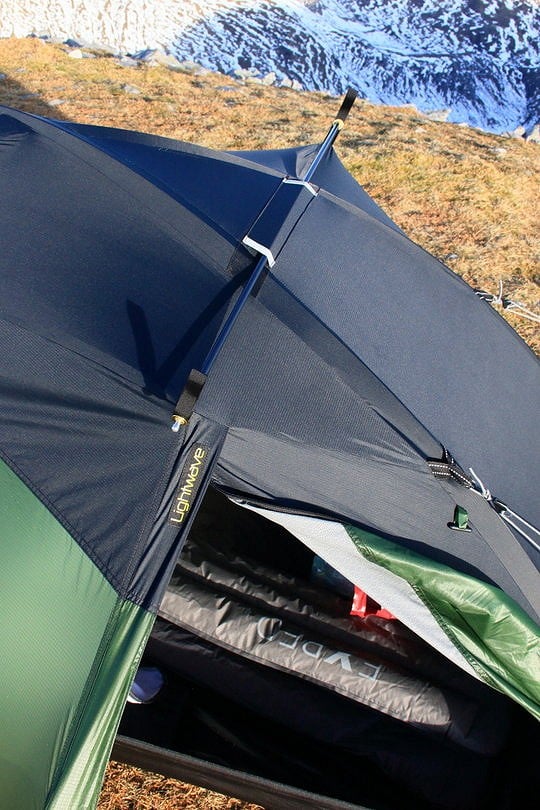
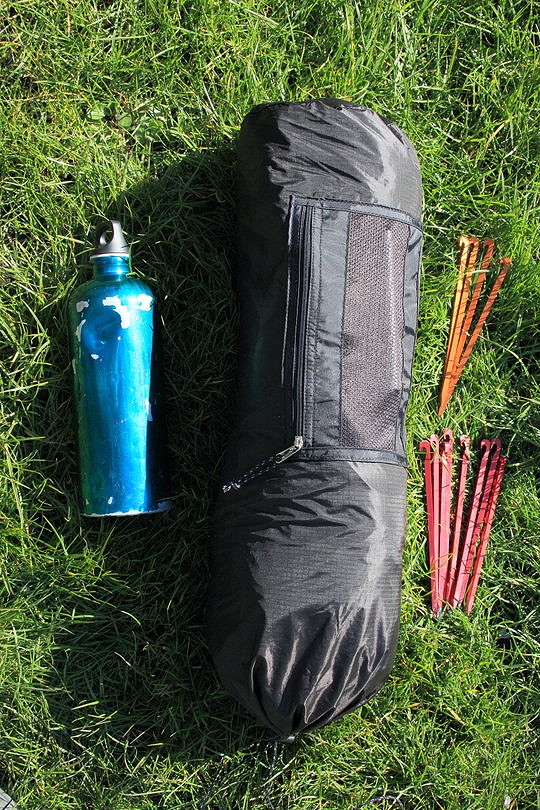
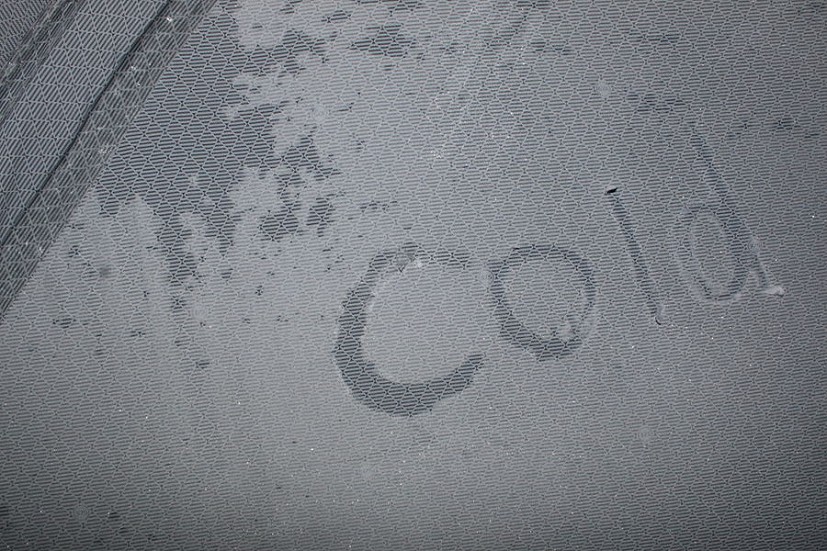
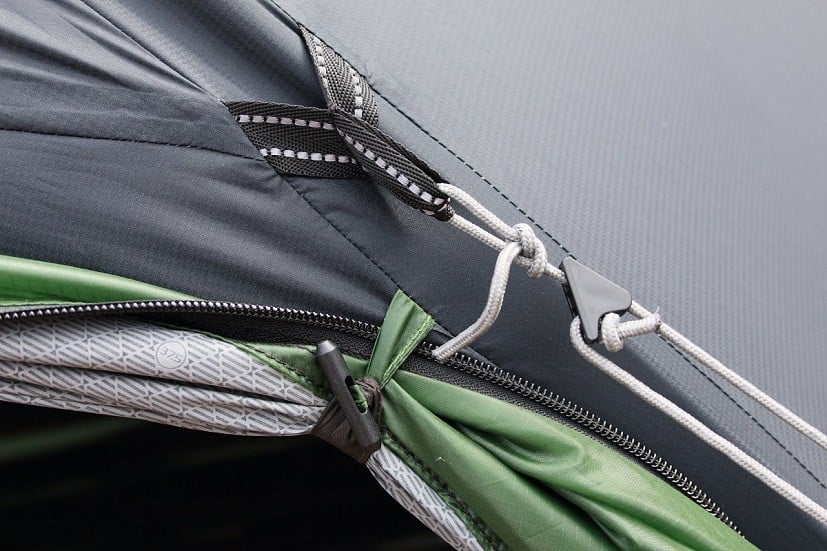
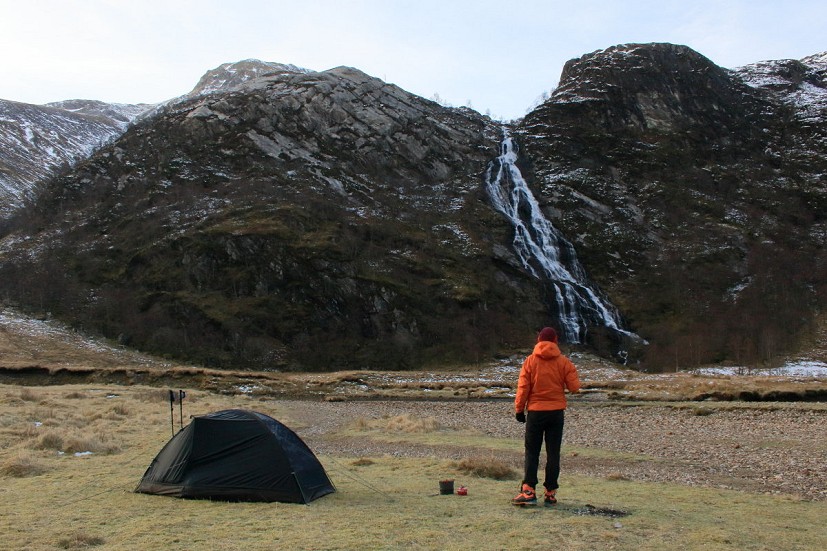
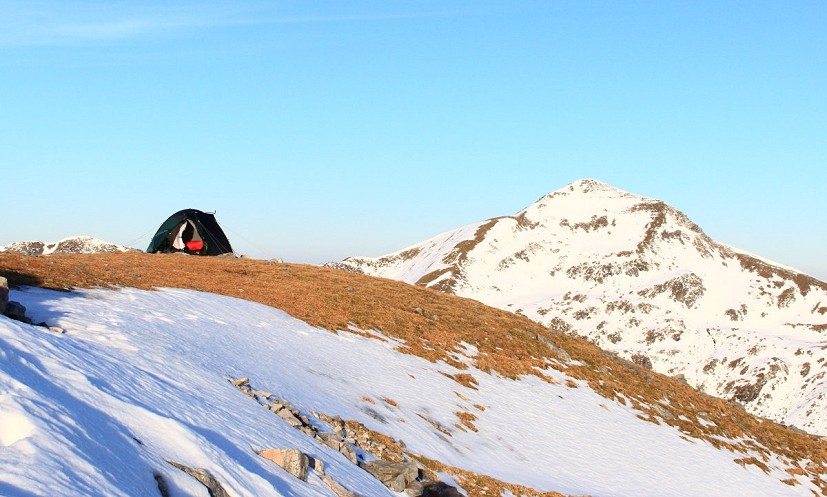


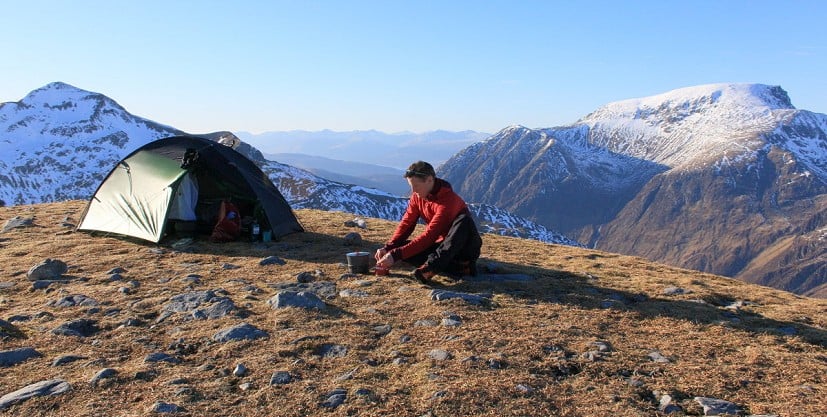
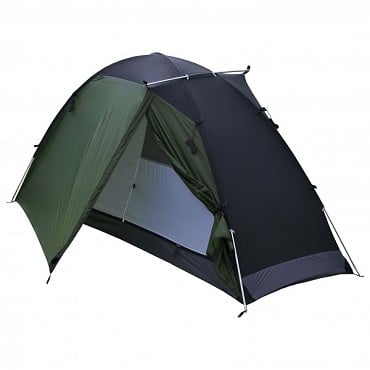
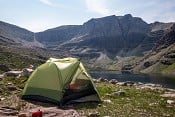
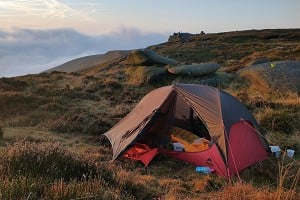
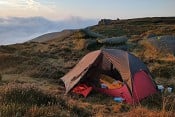
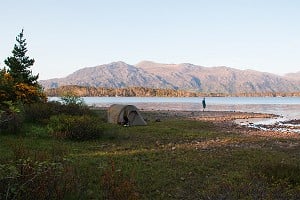
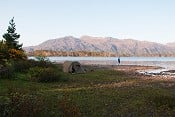
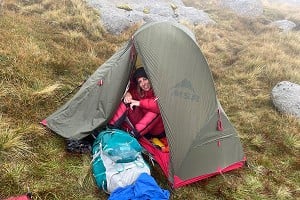
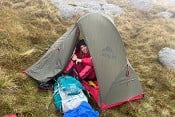
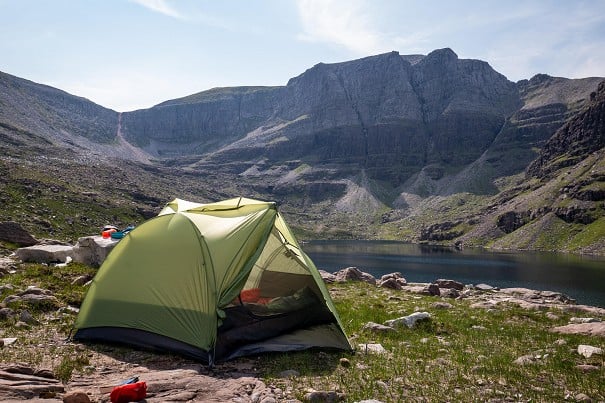

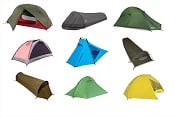
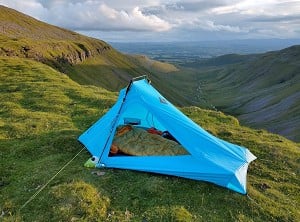
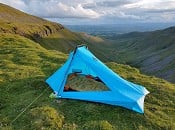
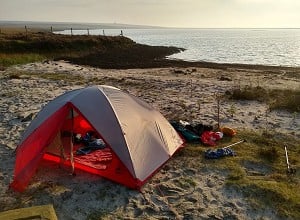
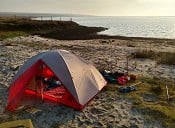
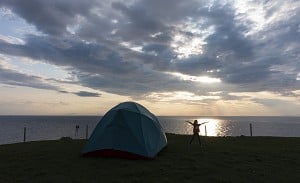
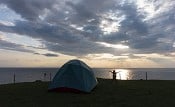
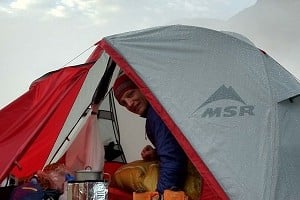
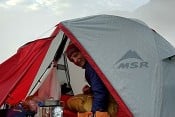
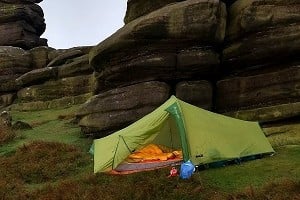
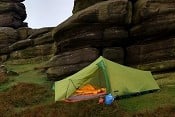
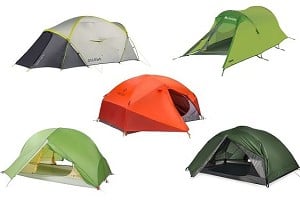

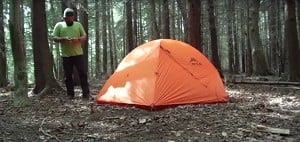

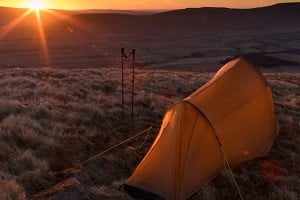
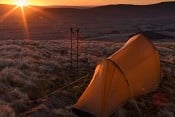
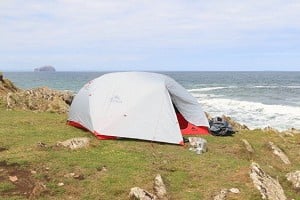
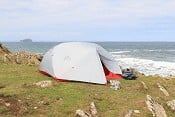
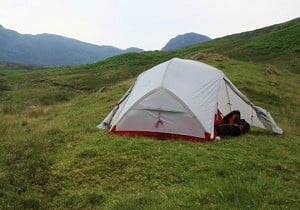
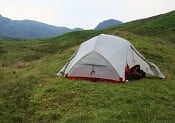
Comments